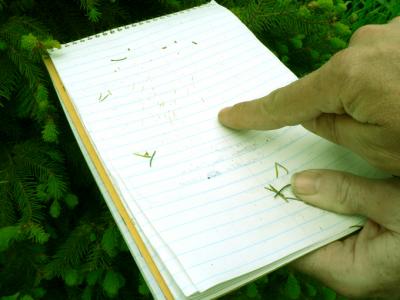Active nymph and adult mites appear as tiny, eight-legged, yellowish to reddish specks. Plants attacked may have very fine webbing on or between the leaves.
Attacked cucurbit leaves are stippled with white and then brown specks. Damaged leaves usually appear dusty or bronzish; they may turn brown and drop from the plant.
Mites are normally controlled by natural enemies. During hot, dry weather, the mites reproduction may outstrip the ability of the predators to control them. Previous insecticide spraying kills the natural enemies, making damaging infestations more likely. Scout for mites, particularly around field edges, during hot, dry weather. Holding a white sheet of paper under the foliage, strike the foliage with quick, hard blows to dislodge the mites onto the paper. Slower-moving mites that streak green when crushed are likely to be twospotted spider mites. Faster-moving mites that streak red when crushed are probably predatory mites. If predatory mites are numerous and plant damage is not occurring, treatment is probably unnecessary. Large numbers of twospotted mites with few or no predatory mites usually warrants control. Treatment usually is required only around field edges, but if mites are numerous, also check for areas throughout the field that may need to be spot treated.
